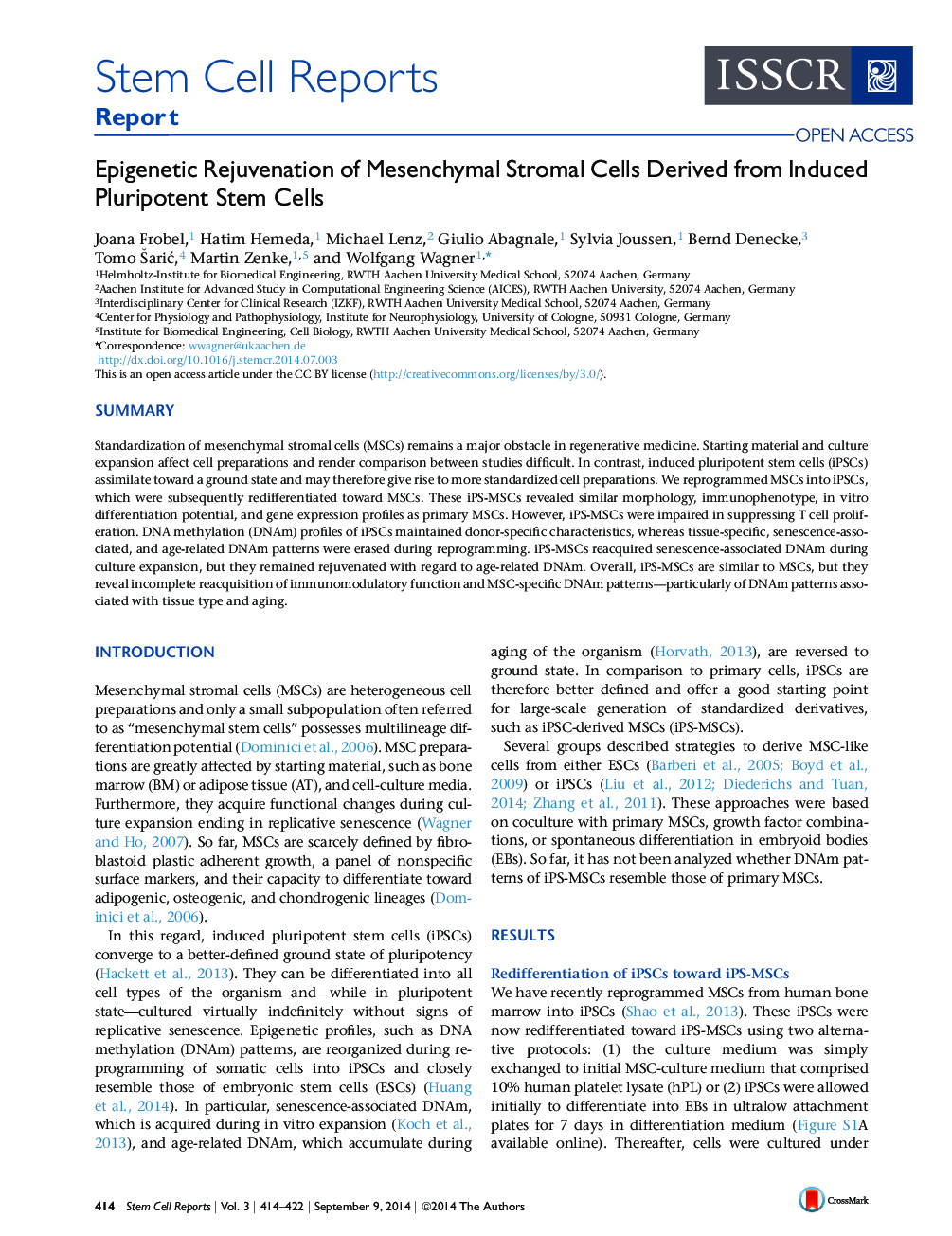| Article ID | Journal | Published Year | Pages | File Type |
|---|---|---|---|---|
| 2093344 | Stem Cell Reports | 2014 | 9 Pages |
•MSC-derived iPSCs are redifferentiated toward MSCs in a one-step protocol•Gene expression profiles of iPS-MSCs closely resemble those of primary MSCs•DNA methylation (DNAm) profiles of iPS-MSCs lag behind those of MSCs•Age-related and tissue-specific DNAm patterns remain erased in iPS-MSCs
SummaryStandardization of mesenchymal stromal cells (MSCs) remains a major obstacle in regenerative medicine. Starting material and culture expansion affect cell preparations and render comparison between studies difficult. In contrast, induced pluripotent stem cells (iPSCs) assimilate toward a ground state and may therefore give rise to more standardized cell preparations. We reprogrammed MSCs into iPSCs, which were subsequently redifferentiated toward MSCs. These iPS-MSCs revealed similar morphology, immunophenotype, in vitro differentiation potential, and gene expression profiles as primary MSCs. However, iPS-MSCs were impaired in suppressing T cell proliferation. DNA methylation (DNAm) profiles of iPSCs maintained donor-specific characteristics, whereas tissue-specific, senescence-associated, and age-related DNAm patterns were erased during reprogramming. iPS-MSCs reacquired senescence-associated DNAm during culture expansion, but they remained rejuvenated with regard to age-related DNAm. Overall, iPS-MSCs are similar to MSCs, but they reveal incomplete reacquisition of immunomodulatory function and MSC-specific DNAm patterns—particularly of DNAm patterns associated with tissue type and aging.
Graphical AbstractFigure optionsDownload full-size imageDownload as PowerPoint slide
